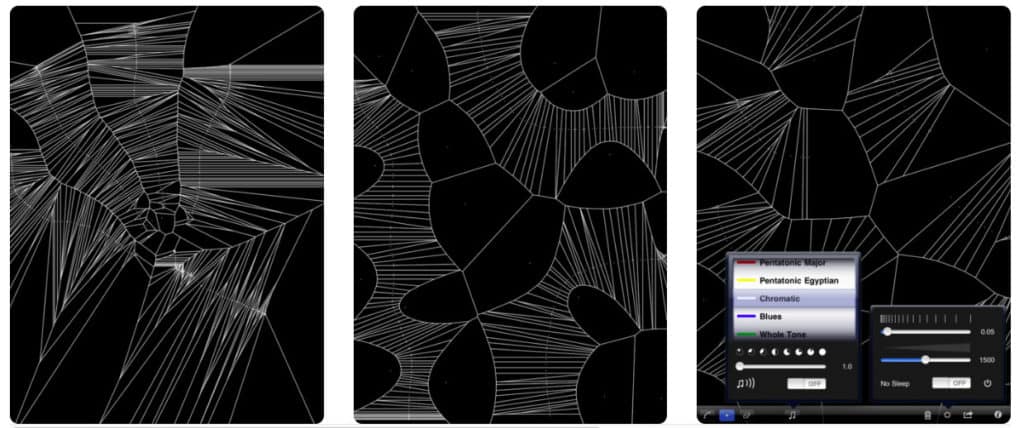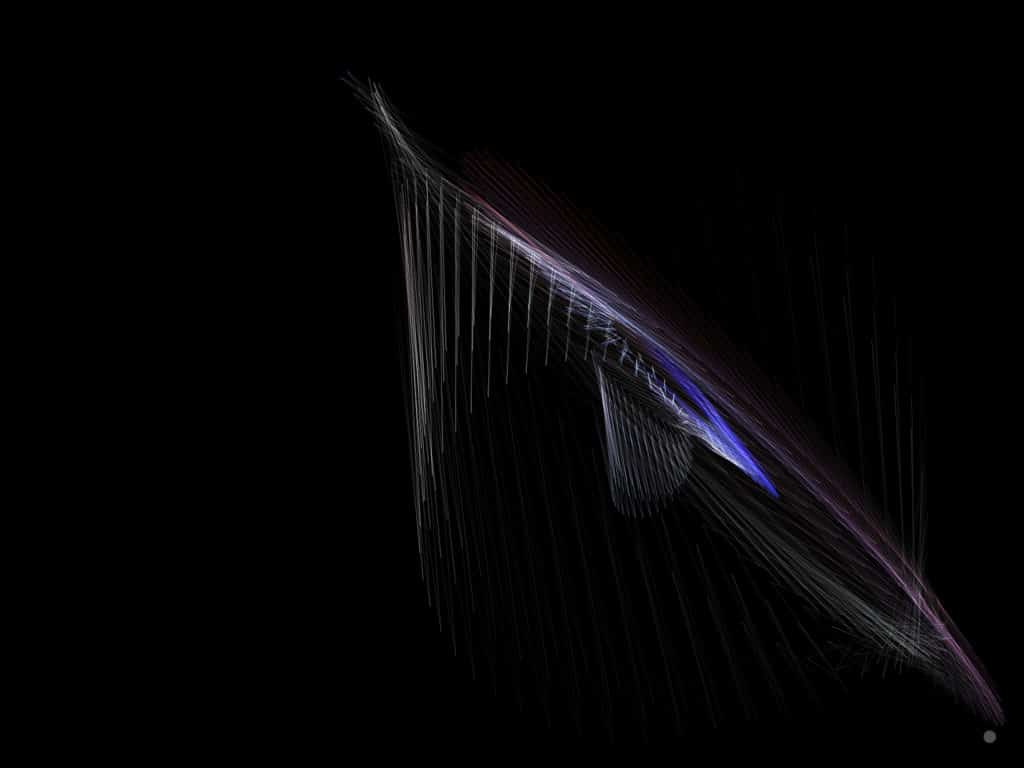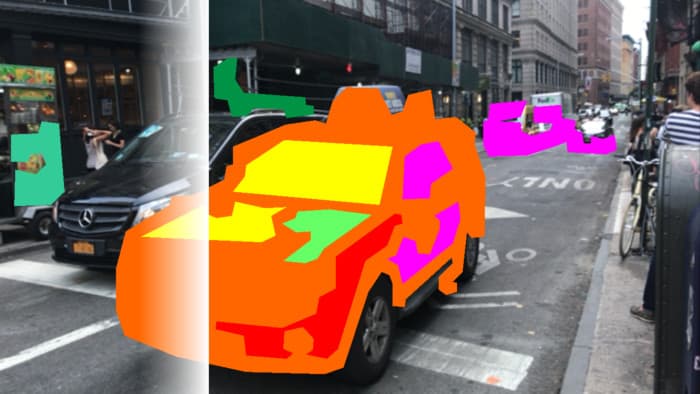Following video, game, net, and other experimental new media art practices, artists have turned their attention to smartphones, to explore this new mobile medium that stands in the borders of interactive and performative art. An ingenious app with a modern interface, installed on your phone or tablet, bridges the gap between art and entertainment, and enables artists to present their work directly to the audience in compact, digital form. An easily accessible and intuitive art exhibit on your phone is mounted in an instant. You can visit it without actually having to leave your home to visit a physical art museum or gallery.
Artists have decided to tap into the potential offered by touchscreens, and the devices that millions of potential viewers carry around in their pockets already. Mobile apps enable the artist to create visually stunning, multisensory and interactive art projects, with the potential to engage every smartphone or tablet user in the process.
What is app art?
App art or iPhone art (though the latter term, in my opinion, seems too restrictive as it refers only to the iOS apps) could be defined as an experimental subdiscipline of new media art, which can be accessed through the iOS/Android devices, combining digital technology with music and visual arts. App art often involves social media, and active user participation. App art takes advantage of touchscreens, sensors and detectors, as well as VR[1], AR[2] and MR[3] technology, in order to transport people into another dimension conjured up by the artist, which stimulates all human senses. “It is a combination of drawing, animation, art, science, and gaming” – says Scott Snibbe, when talking about his app, titled Gravilux.
Scott Snibbe & co.
It is no wonder that the pioneers of app art are those artists whose practice was already focused on video, net and interactive art. Artists such as Scott Snibbe, Rafaël Rozendaal and Golan Levin all ventured into the field of digitalised, joint-multisensory experience artwork shortly after the App Store (2008) and Google Play (2009) were launched. Their apps include: Tripolar (unfortunately this app has got no updates), Gravilux, Bubble Harp, MotionPhone (the app is currently unavailable) (Scott Snibbe), Finger Battle, Clouds (Rafaël Rozendaal) and Yellowtail (Golan Levin).
As opposed to Rozendaal who created something from scratch, Snibbe designed digital versions of his early art installations which have previously been displayed IRL[4], in art galleries and museums. Gravilux and Bubble Harp are meant to introduce “real folks”, and not only art enthusiasts, to generative and interactive art. MotionPhone (the app is currently unavailable) was a networked work of art by Snibbe (also based on one of his previous installations), that is created and expanded simultaneously by a number of people tracing their fingertips on their iPhones’ touchscreens.
Niche experiment with interface and touchscreen
If the intention of app artists was to reach a wider audience, consisting of the exponentially growing number of smartphone and tablet users, then they must have failed somewhere. App art is still a niche medium that fell short of the artists’ intentions. Perhaps, it was simply superseded by the functional apps and trite yet entertaining games, which inundated the App Store and Google Play platforms. The artists overestimated the general public that, as it turns out, didn’t recognize the allure of the instant art creation.
App art might have not found its wider audience, but it certainly inspired other artists, such as Björk who collaborated with Snibbe on the Björk: Biophilia album/project, consisting of a living and breathing ecosystem of sound and multimedia. This exploration of music, science and nature is considered one of the greatest works of app art to date and is the first app in MoMA’s collection.
Despite its limited appeal, app art still enjoys an enduring popularity among the artists who keep experimenting with the medium. Their endeavors result in the increasingly impressive creations that can be viewed online, at http://www.iphoneart.org, and Experiments with Google website (e.g. Just a line, Between Us).
Most of these apps will never gather lots of users. Nonetheless, app artists continue to push the envelope, freely testing the boundaries of the medium, interfaces and touchscreens, which in turn fires the imagination of popular and mainstream app developers.
App art in Poland
Following global trends, and the introduction of new technology and systems, new media, interactive and net artists of the late ‘80s (who associated with the WRO Art Center and WRO Biennale) paved the way for app art in Poland. In 2014, Piotr Wyrzykowski – a performer, new media artist and double winner of the WRO Media Art Biennale – created two apps titled Protest and Self-immolation. On the official Piotr Wyrzykowski website, we find out that the “Protest app is a tool for expressing your civil revolt opinions used for creating a peaceful virtual demonstration.”
An app titled ‘The Dog’ was also created as part of the WRO Biennale. It is a mobile version of an art installation by Zbigniew Kupisz, which was exhibited back in 1994 in Wrocław. In 2015, the concept of the original installation was translated into an app by Pawel Janicki and Malgorzata Sikorska, designed and developed to encourage users to explore the intersection of the real objects with their virtual counterparts. This app questions the very nature of human relation to digital technology, as well as its limits.
Unfortunately, app creators remain largely oblivious to the fact that every app has to be updated on a regular basis so that it is fully compliant with the latest version of any given operating system. Neither the Dog nor Protest or Self-immolation have been updated for years. As a result, they can’t be installed on the latest devices.
It seems worth mentioning that mainstream app designers have also been tinkering with app art, art activism and artistic mobile games. You can now download such apps as VOI, Hocus (based on the drawings by M.C. Escher), Tormentum (based on the paintings by Zbigniew Beksiński and H.R Giger) or the award-winning app This War of Mine (studio 11bits), a game in which you become a civilian trying to survive in a besieged city.
What’s the future of app art?
App art is still struggling to find its place in the new media art world. However, those who rise to the challenge of mobile app design, demonstrate not only an outstanding level of creativity and artistry, but also impressive expertise in programming and mastery of state-of-the-art technology. App art harbors some untapped potential that interdisciplinary artists working with both art and technology may find truly inspiring.
Currently, smartphones and tablets are perceived as mainly tools for drawing, painting, photographing, composing, making animations and multimedia art projects, and not as vehicles for genuine works of art. Shoestring budgets, and insufficient knowledge about app development still hinder the artists’ pursuits. Nevertheless, the mobile medium combines art with technology, while engaging the audience in the creative process. The virtual, augmented and mixed realities are still evolving. Some of the boldest artists will jump at this opportunity sooner or later.
Did you know that App Art Award ceremony has been organized for seven consecutive years in the Center for Art and Media in Karlshure. The founders have distinguished three categories:
– AppARTivism (apps focusing on civil activism)
– GameART (mobile games)
– SoundART (apps using images and music)
[author] [author_image timthumb=’on’]http://contemporarylynx.co.uk//wp-content/uploads/2018/05/Sylwia-Żółkiewska.jpg[/author_image] [author_info]Sylwia Żółkiewska – visual artist, designer and new technologies enthusiast. She writes about how mobile applications can be used creatively to promote knowledge and an appreciation of art, deepen users’ understanding of culture, facilitate education and streamline business activities. She also paints and creates computer graphics. For more information, see: www.aplikacjewkulturze.pl, www.art.zolkiewska.pl[/author_info] [/author]
[1] VR – Virtual Reality
[2] AR – Augmented Reality
[3] MR – Mixed Reality
[4] IRL – In Real Life















